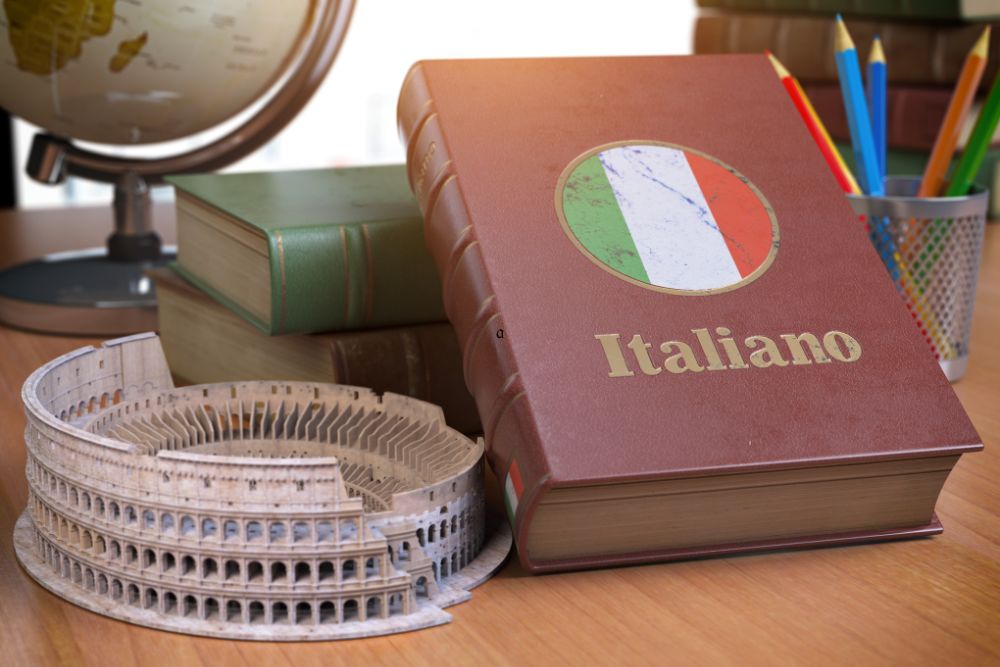Discover Milan While Learning Italian: An Unforgettable Experience
Learning Italian in Milan is not just about sitting in a classroom—it’s about living the language through the city’s rhythm, beauty, and daily life. Milan, Italy’s cultural and economic capital, offers an ideal backdrop for language immersion. Its unique blend of history, innovation, and international flair makes it the perfect environment for learners who want to go beyond textbooks and grammar drills.
Walking through Milan’s historic center becomes a vocabulary lesson in itself: the Duomo teaches architectural terms; the Navigli invites conversations about lifestyle and leisure; a morning espresso at a local bar turns into an opportunity to practice greetings and expressions. Students are constantly exposed to authentic Italian—from street signs to overheard conversations—and this constant exposure accelerates comprehension and retention.
Moreover, Milan’s rich network of museums, galleries, theaters, and design hubs creates endless opportunities to connect language with context. Every exhibit, performance, or guided tour becomes a real-life comprehension exercise, helping students move from passive understanding to active expression. Whether you’re talking to a museum guide or ordering a cappuccino, every interaction becomes a lesson—full of gestures, idioms, and cultural nuance.
At Spaziolingua, we harness Milan’s urban energy as a classroom. Our students explore the city with native-speaking teachers who guide them through interactive, on-the-go language sessions. This method transforms Milan into a learning ecosystem, where students build vocabulary, confidence, and cultural fluency in the most natural way possible.
Want to live Milan while learning Italian?
Contact Spaziolingua today and book your spot in one of our immersive language experiences.
YOU CAN ALSO READ: Learning italian through culture: art, food, cinema
Learning Language Through Milan’s Streets: History in Every Corner
In Milan, every street corner tells a story, and for Italian learners, those stories are invitations to listen, speak, and interpret. The city’s layers of history—Roman columns, Gothic cathedrals, Renaissance courtyards, post-war modernism—create a living textbook of architectural vocabulary, rich in visual and emotional triggers. For language students, this setting provides an immersive context where grammar rules meet tangible experience.
Picture this: a guided walk through the Brera district becomes an interactive language session. Describing the color of facades, the curves of wrought-iron balconies, or the meaning behind street names like “Via Madonnina” engages students with descriptive language and historical context. Phrases like “Che stile architettonico è questo?” or “A cosa serviva questo edificio?” are not only questions—they are tools for building fluency and curiosity.
Milan’s architectural diversity also encourages learners to adapt their Italian to different registers and tones. Discussing the grandeur of the Galleria Vittorio Emanuele II might involve more formal or poetic language, while chatting about street art in the Isola district calls for a more informal, contemporary lexicon. This constant code-switching strengthens flexibility, helping learners become more expressive and precise in different situations.
At Spaziolingua, we integrate these visual and historical cues directly into our teaching. We organize language walks through Milan’s most iconic and lesser-known neighborhoods, using the city’s landscape as a prompt for structured conversation and vocabulary expansion. With each outing, students absorb not just words, but the cultural mindset behind them—how Italians see, describe, and relate to their surroundings.
Curious to learn Italian by exploring Milan’s architecture and soul?
Write to Spaziolingua and find out how our city-based lessons can enrich your learning experience.
Tasting the Language: How Milanese Cuisine Fuels Italian Learning
Milan is not only a city of fashion and finance—it’s a city of flavor. And when it comes to learning Italian, food becomes one of the most powerful and pleasurable tools for language acquisition. From iconic dishes like risotto alla milanese to the ritual of aperitivo, every culinary experience is rich with vocabulary, social cues, and cultural insights. Eating in Milan isn’t just about nourishment—it’s about conversation, tradition, and identity.
Students quickly learn that the vocabulary of food is far more than words on a menu. It includes verbs like assaggiare (to taste), expressions like “È saporito” (It’s flavorful), and social codes like when to toast or how to ask for the bill. Even seemingly simple exchanges like ordering a coffee can reveal nuances of politeness, intonation, and regional preference. Food invites natural dialogue, turning every meal into a lesson in fluency.
At Spaziolingua, we integrate this linguistic richness into hands-on learning. Our students participate in language-through-cuisine workshops where they prepare Milanese recipes with Italian-speaking chefs. During these sessions, learners actively use new vocabulary, follow spoken instructions, and ask culturally relevant questions. The informal, sensory context makes new words more memorable and emotionally anchored.
But the learning doesn’t stop in the kitchen. Going out for aperitivo or dining in a trattoria with classmates becomes an extension of the classroom. In these moments, students practice real Italian in real settings—asking about ingredients, describing preferences, and absorbing the rhythm of everyday interactions. They also learn the deeper meanings behind dishes: why saffron is used in risotto, or what cotoletta alla milanese says about the city’s past and pride.
Want to master Italian while enjoying authentic Milanese flavors?
Join Spaziolingua’s culinary language programs and learn with all your senses.

Watching and Learning: How Italian Cinema in Milan Enhances Fluency
In Milan, language learning doesn’t stop when the lights dim in the cinema. On the contrary, Italian film offers one of the most powerful tools for developing listening comprehension, emotional nuance, and authentic expression. Whether viewed in classic theaters like Anteo Palazzo del Cinema or discussed in classroom screenings, cinema becomes a gateway to real spoken Italian and the culture it embodies.
Italian movies expose learners to the natural rhythm, tone, and emotion of the language. Unlike scripted textbook dialogues, films feature real voices, regional accents, and unpredictable pacing. Watching a scene from La Vita è Bella or Perfetti Sconosciuti introduces idioms, sarcasm, slang, and emotional tension—elements that are difficult to replicate in traditional learning environments. Subtle shifts in tone, like the way someone says “Va bene” in resignation or joy, teach students to hear meaning beyond words.
At Spaziolingua, we include cinema-focused sessions in our curriculum. Students watch selected scenes or full films and then engage in guided discussions entirely in Italian. These moments push learners to describe characters, interpret dialogues, analyze cultural references, and voice opinions using newly acquired vocabulary. This method improves listening skills, speaking confidence, and critical thinking, all while keeping learning enjoyable and socially engaging.
What makes film especially valuable is its ability to present life as it is lived. Through cinema, students discover how Italians argue, joke, fall in love, navigate awkward silences, or express frustration. These insights help learners communicate more naturally, adapting their Italian to various contexts, emotions, and social situations.
Want to improve your Italian by watching powerful stories unfold on screen?
Contact Spaziolingua and join our cinema-based learning sessions that turn film into fluent conversation.
YOU CAN ALSO READ: Language and culture: what you really learn in Spaziolingua’s intensive courses
Milan as Your Classroom: A City That Teaches Through Culture
To learn Italian in Milan is to learn far more than vocabulary and verb tenses. It is to be transformed by the city’s spirit, energy, and cultural depth. Milan doesn’t just teach you how to speak—it shows you how to listen, connect, and express yourself as part of a living, breathing language. Through its streets, art, food, and films, the city becomes your co-teacher, offering daily lessons that are personal, meaningful, and unforgettable.
What sets Milan apart is its ability to blend the classic with the contemporary. In one day, a student can discuss Renaissance paintings in the morning, savor modern fusion dishes at lunch, and watch a contemporary film in the evening—all while practicing Italian in context. This layered exposure creates not just fluency, but confidence. Students begin to understand the emotional logic of the language, not just its rules.
At Spaziolingua, we design our courses to take full advantage of this urban richness. Every module, every activity, every outing is shaped to immerse you in the language as it’s lived—through the people, places, and moments that define Milan. Whether you’re here for a few weeks or a full academic year, your experience is tailored to help you think, speak, and feel in Italian.
This cultural approach does more than teach Italian—it transforms the learner. It builds empathy, curiosity, and intercultural awareness. Our students leave not only with stronger language skills but also with a deeper connection to Italy and to themselves.
Are you ready to make Milan your classroom and discover yourself through Italian?
Start your journey with Spaziolingua today—take our free level test and explore our cultural immersion programs.






